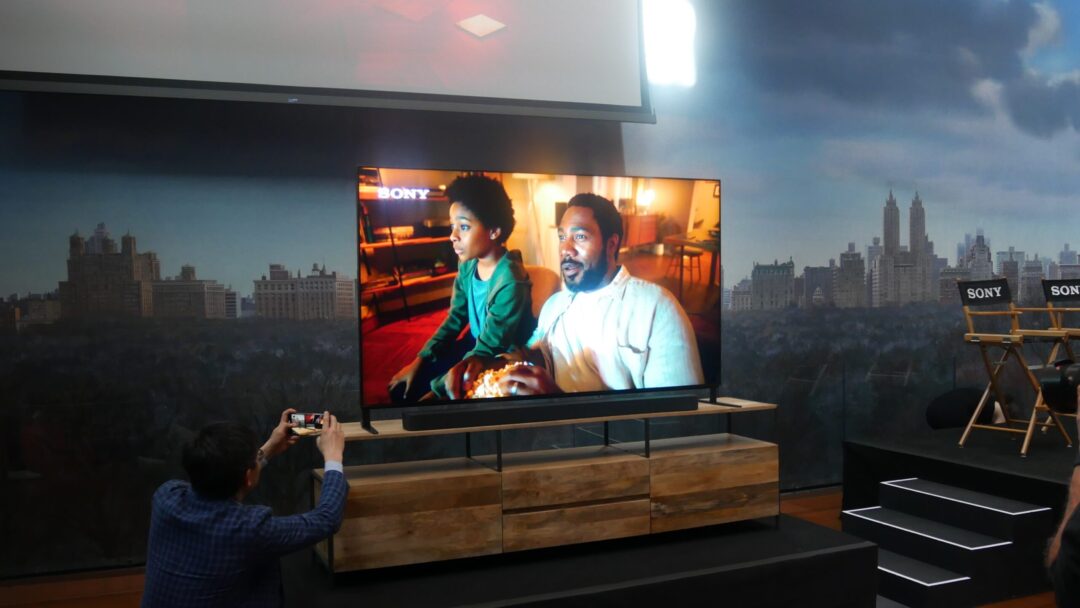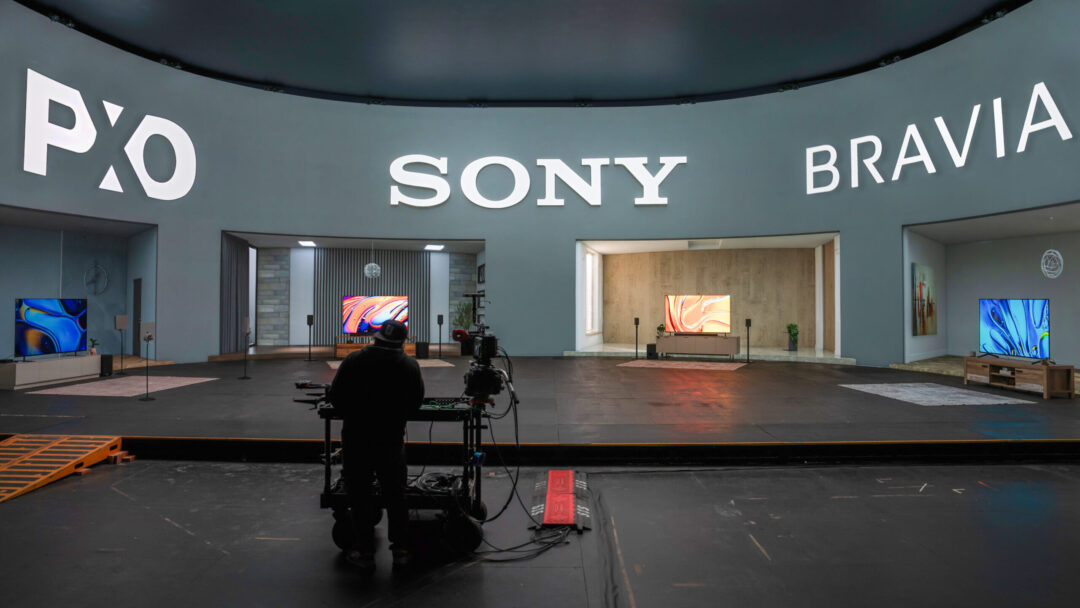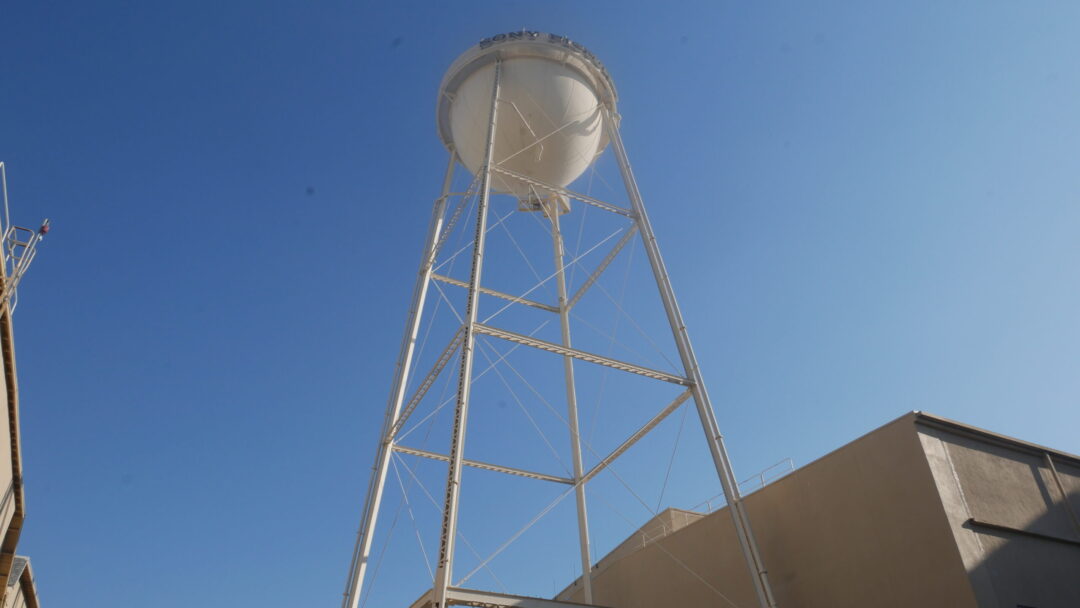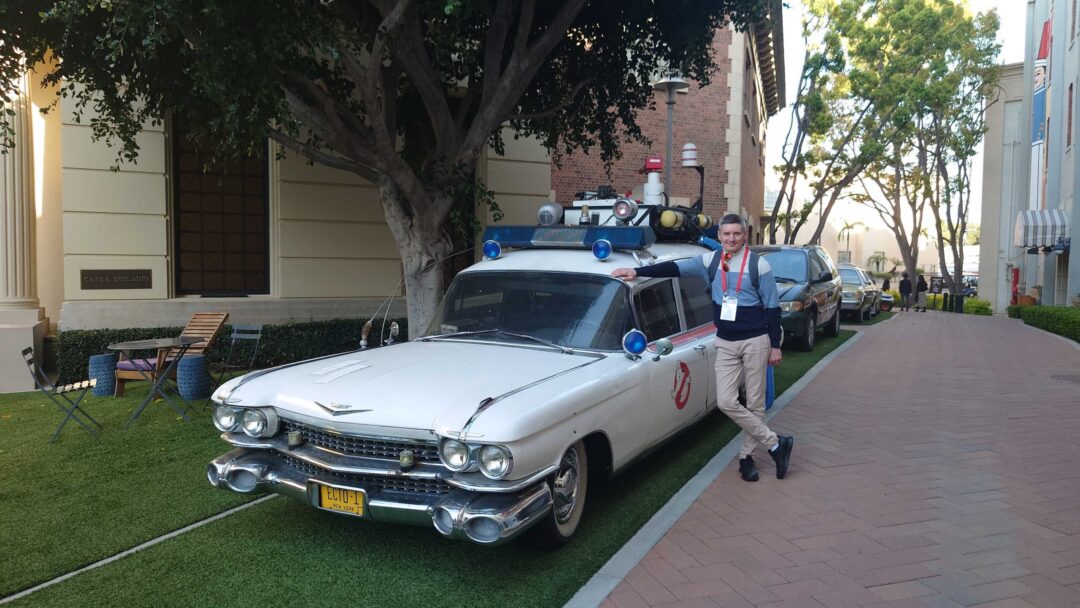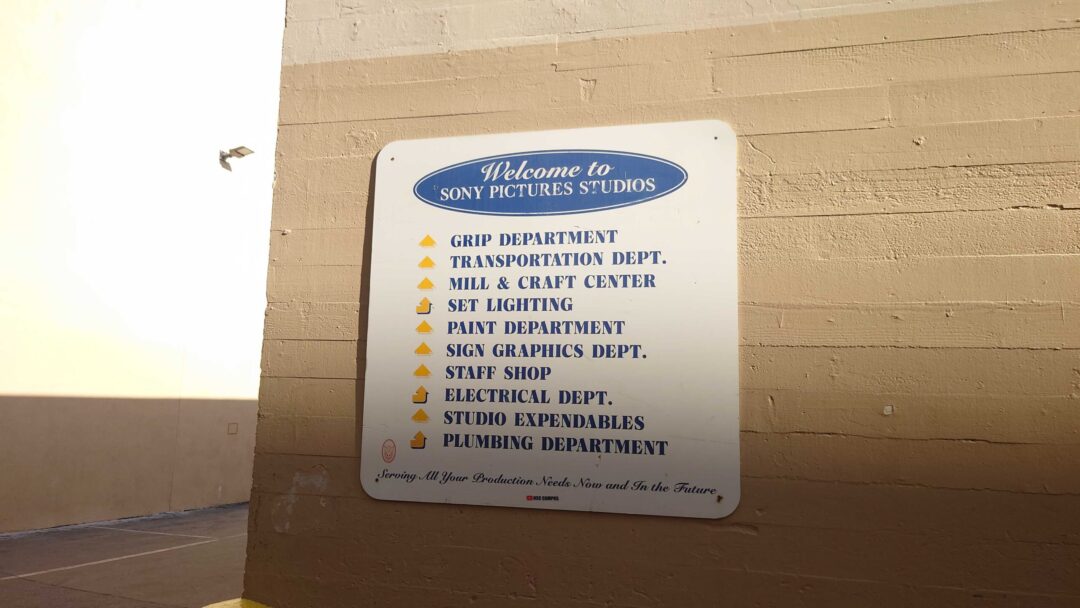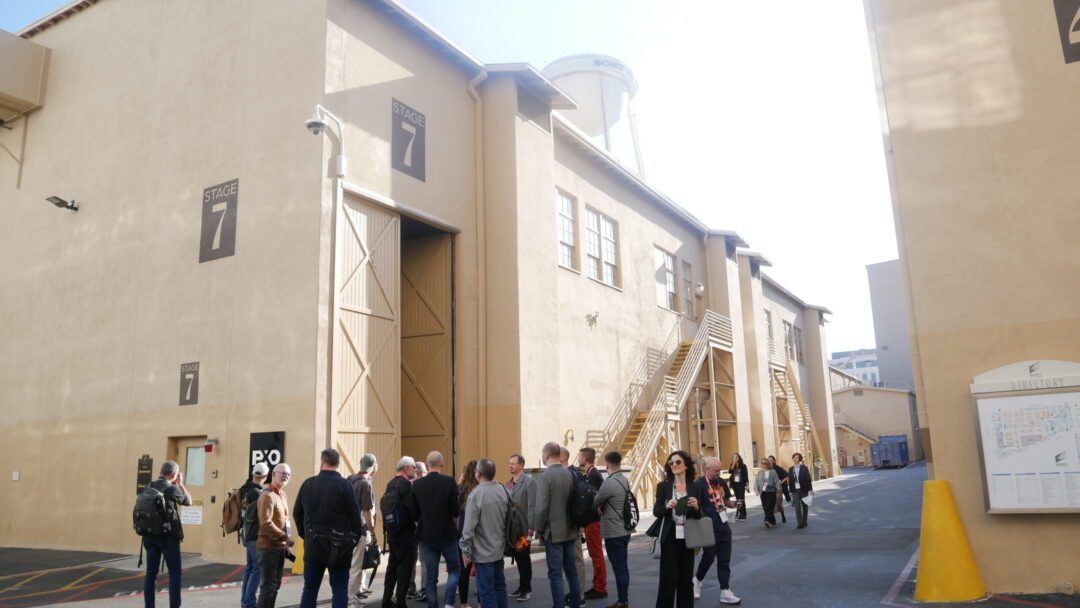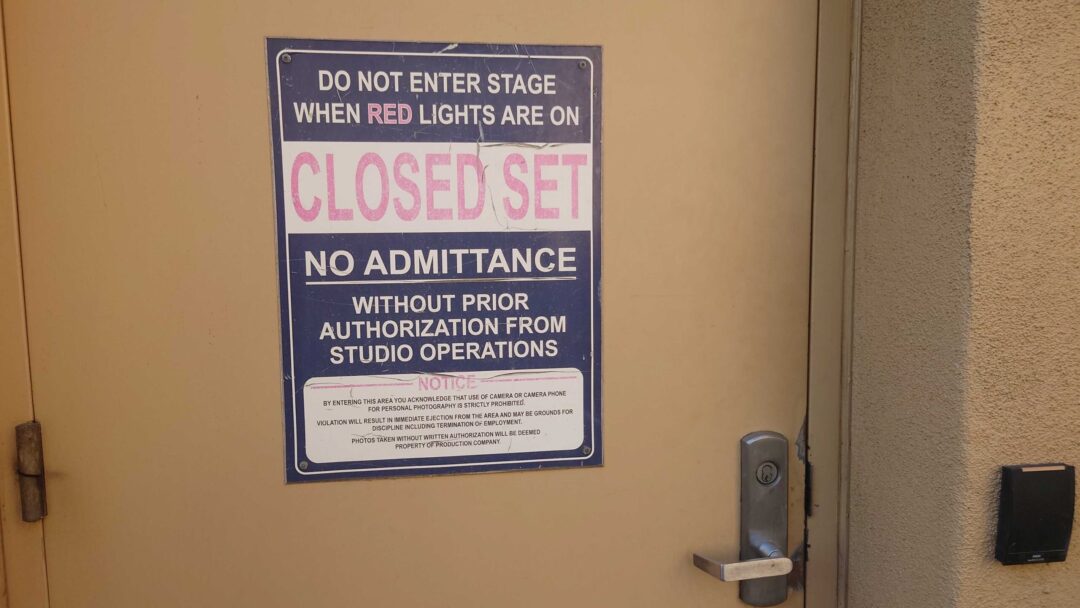Los Angeles/L&B Tech Reviews: Sony has kept their new TV models under wraps for an unusually long time this year. Apart from a sneak peek of their new prototype at CES in January, the details of the Bravia 2024 series have been treated as a state secret. Until now!
Now we can finally reveal: L&B Tech Reviews attended an event in the US just before Easter. The headline for the event was ‘Cinema is coming home’, and the setting was Sony Pictures Studios in Culver City, Los Angeles, where Sony’s new TV and home cinema products for 2024, including the Bravia 9, Bravia 8 and Bravia 7 models.
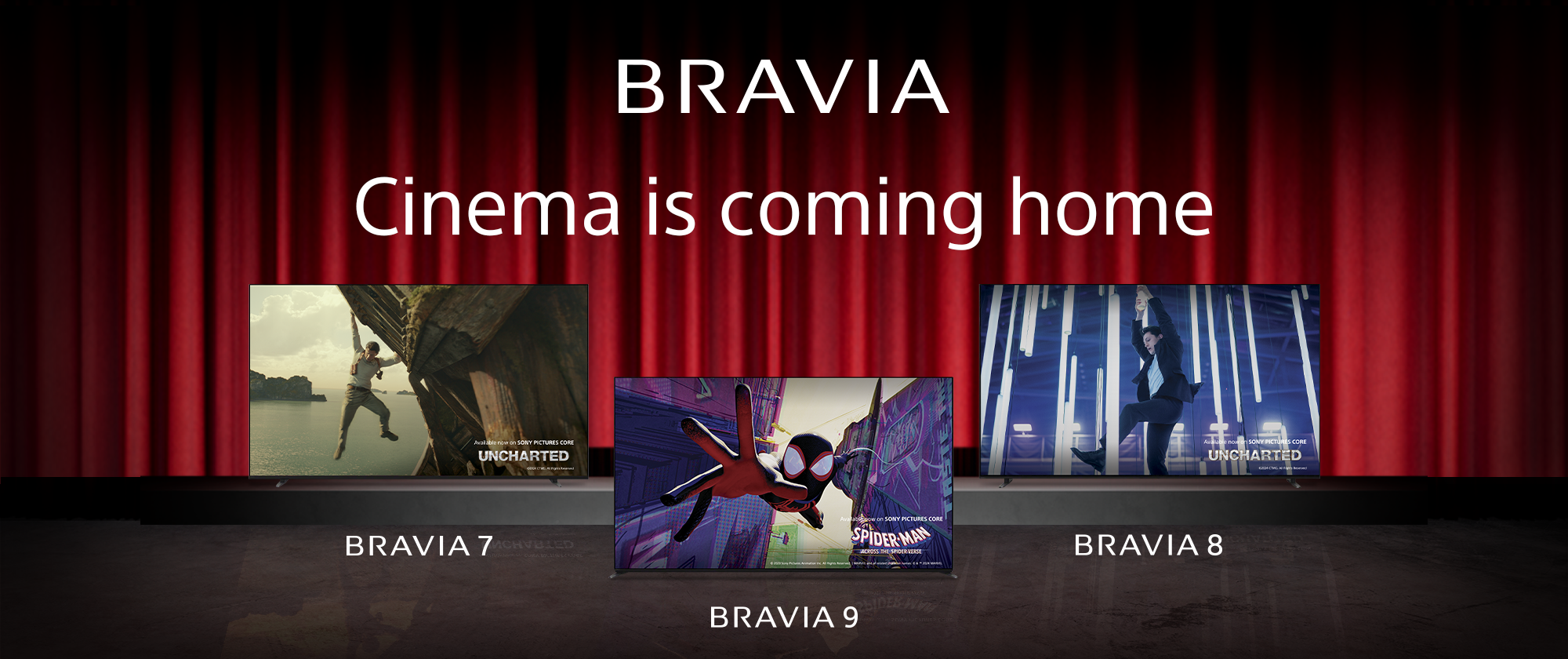
The last time we visited this studio was 11 years ago, when Sony introduced some of its first 4K TVs. So it was high time for a revisit!
Sony Bravia TV 2024: Bringing the cinema experience home
But wait a minute – why did Sony drag us all the way across the Atlantic to the US to show off some cool TVs and soundbars?
The intention is to show its strong connection with the cinema industry, of course, but also to give us a better insight into how – and why – famous films and series are produced in a certain way.
Sony has close ties to both the creative and executive sides of the film industry through Sony Pictures, which produces the films, and Sony Professional, which supplies film cameras, monitors and other production equipment.
In addition, it was of course a golden opportunity to highlight the latest TV products and emphasise why it’s so important that home electronics are able to faithfully recreate the best film experiences.
To give us an insight, Sony invited director Joseph Kosinski and cinematographer Claudio Miranda to the stage. They are behind well-known blockbusters such as Tron: Legacy and Top Gun: Maverick.
Kosinski and Miranda told us how they managed to get a Sony Venice film camera into an F18 fighter jet during the filming of Maverick. Not to mention the painstaking work that goes into post-production, including colour grading.
“We can spend weeks, if not months, colour grading a film – so it’s crucial that the consumer is able to see it exactly as we intended,” says Joseph Kosinski, adding: “I love what HDR (High Dynamic Range) brings to the living room, that there’s much higher quality available to the consumer now.”
To bring us more TV content of a quality that lives up to the intentions of directors and producers, Sony is introducing more calibrated picture settings this year. In addition to the current Netflix Adaptive Calibrated Mode and Sony Pictures Core Calibrated Mode, a new Prime Video Calibrated Mode will be introduced to ensure optimal picture settings for different types of Prime content.
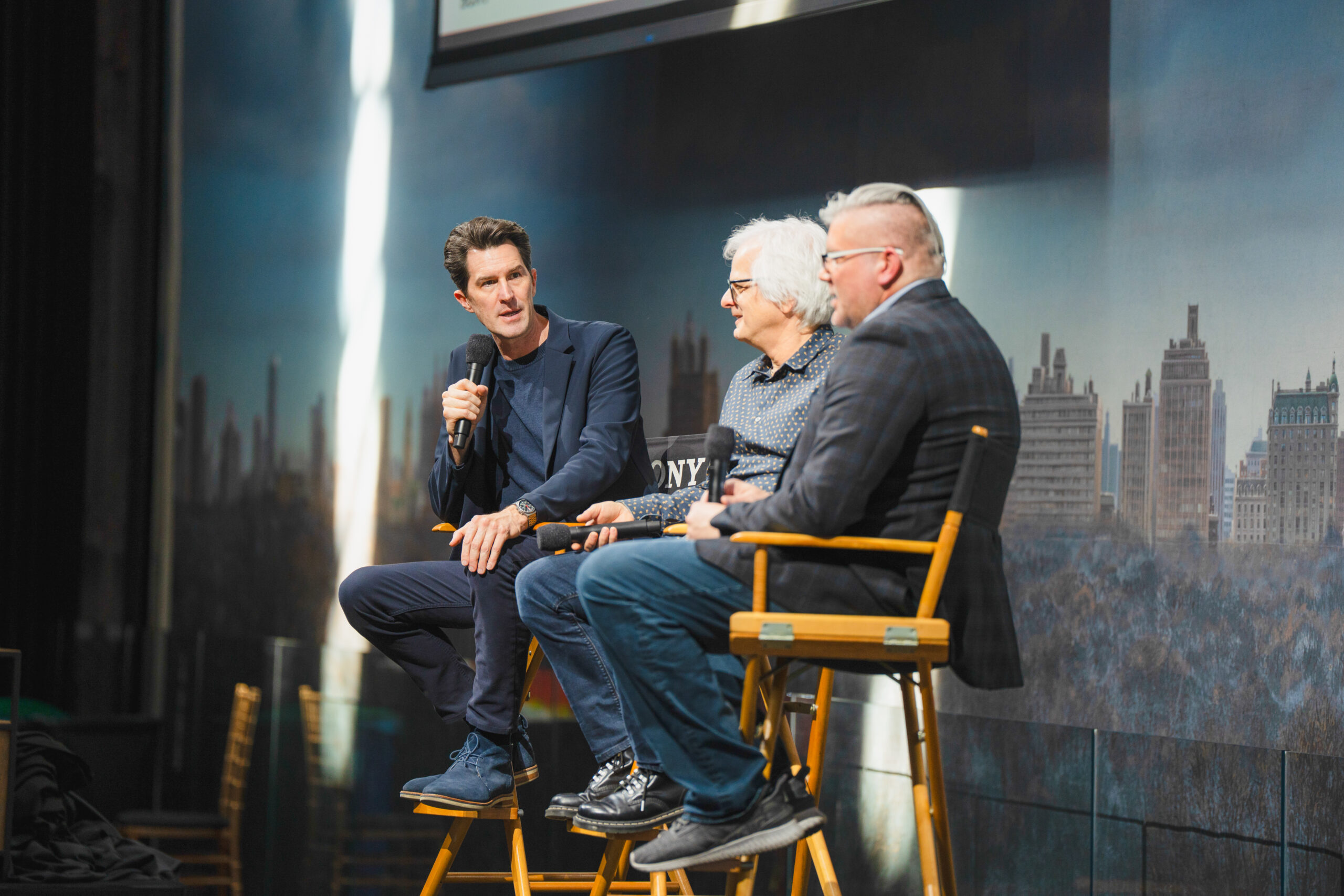
Will the film world soon move to 4,000 nits?
It’s part of the story that Sony Professional recently switched its mastering monitors from OLED to LCD. The trusty BVM-HX310, costing around € 25,000, is being replaced by the new HX3110, which is – yes, that’s right – an LCD-based monitor.
The reason for the replacement, according to Sony, is the need for more brightness for mastering HDR productions. While the old monitor tops out at 1,000 nits, the new model can deliver 4,000 nits continuously. And the difference is quite significant. Sony showed us test images with up to 4,000 nits of colour gradations, where the old HX310 flattened out and “clipped” at the top. It simply couldn’t reproduce the brightest shades of, for example, sunlight.
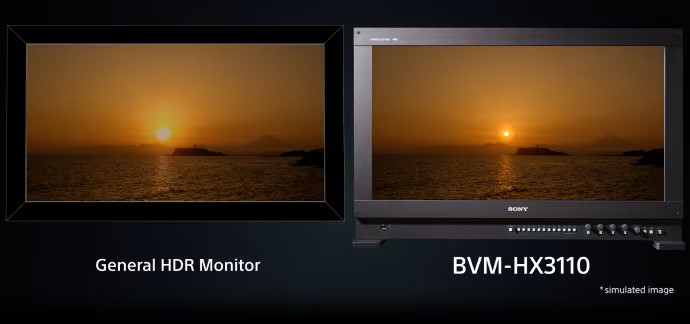
Interest in the film industry in producing and mastering films at 4,000 nits has so far been moderate: most feature films currently stop at 1,000 nits, and 2-300 nits is usually sufficient for cinema theatres. But Sony believes that more people will start to do so, as there is now a reliable studio monitor that can rise to the challenge. Not least because much of the content goes straight to streaming.
Or as Hugo Gaggioni from Sony Professional said: “Once one or two directors start exploring 4,000 nits in their films, more will jump on the bandwagon.”
Gaggioni also pointed out that the high brightness is not intended to dazzle us or make watching films uncomfortable. It’s about bringing out the extra nuances in small bright areas.
So much for the background – now for the TV models!
Sony Bravia 9: New top model in 2024
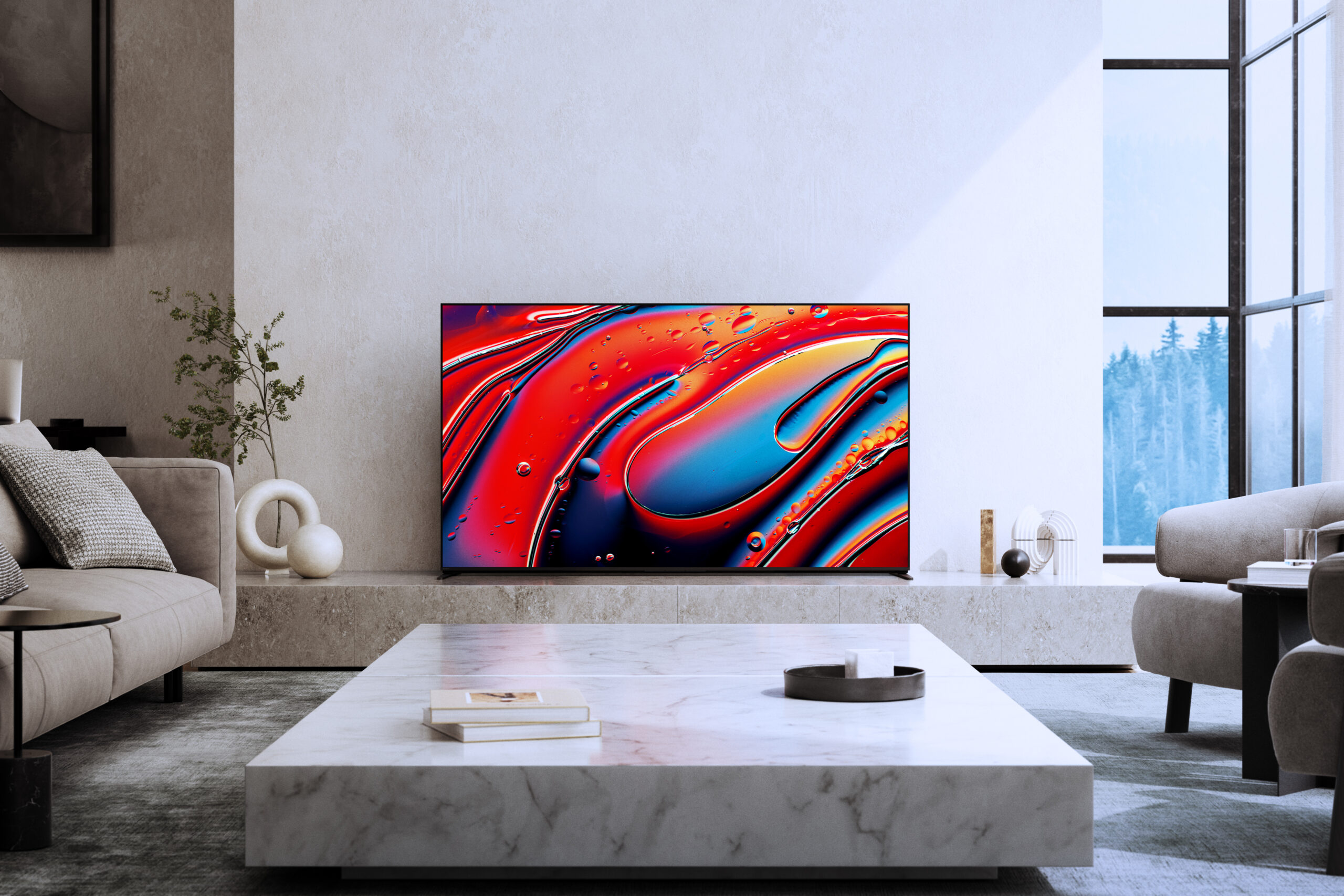
Rumours and speculation have circulated about this year’s range. Will this year’s new high-end model from Sony be a further development of last year’s top model A95L with QD-OLED, or has the Japanese manufacturer switched focus to LCD with MiniLED and local dimming?
The advanced prototype we saw at CES would suggest so, and now we have the answer: Last year’s A95L lives on, but the new flagship model in 2024 is actually a super-advanced MiniLED LCD TV and is simply called Bravia 9.
The Sony Bravia 9 utilises the latest version of Sony’s backlight technology – XR Backlight Master Drive. Sony wouldn’t reveal exactly how many dimming zones the Bravia 9 has, but did say that it has three times as many dimming zones as its predecessor, the X95L, and 50 per cent more brightness.
Sony was clearly most keen to talk about the smart and precise light control they have achieved on the new top model using their own 22 bit driver for the LEDs. And we have to admit that the new XR Backlight Master Drive technology seems to provide remarkably good and “”pinpoint”” light control.
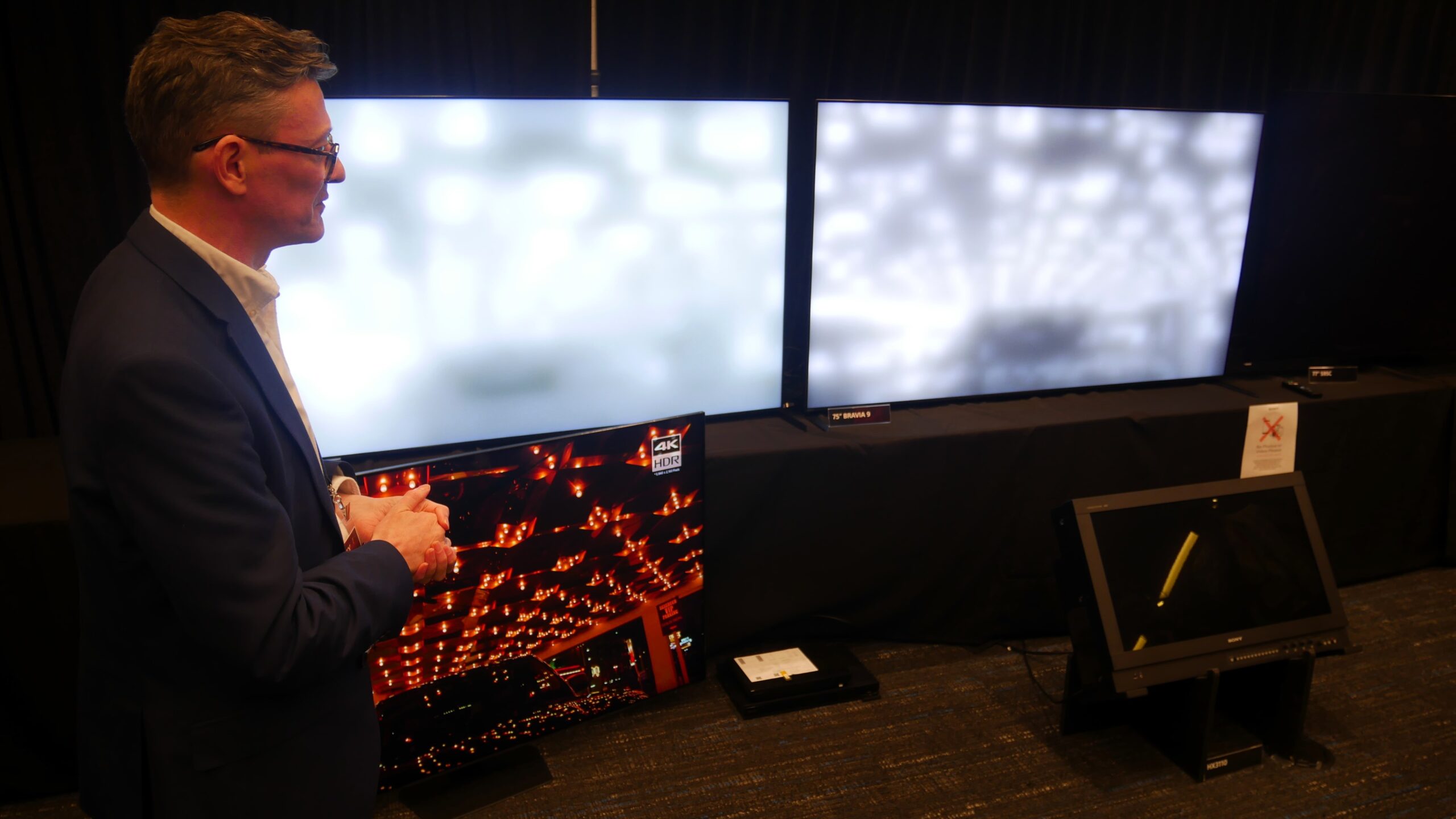
The demonstrations we saw – just like at CES – gave the impression of a very fine-meshed, fast and precise distribution of light. In addition, the Bravia 9 has an impressive, almost OLED-like black level, which is probably the best we’ve ever seen from an LCD screen.
Sony had the Bravia 9 on display alongside the Samsung S95C QD-OLED and the LG OLED G3 from 2023, and the new model came very close to the studio monitor in several respects, with striking sharpness and detail, in addition to the brightness being very impressive.
The Sony monitor can reportedly handle over 4,000 nits in small batches, and it’s not necessarily about dazzling you, but rather having enough headroom to render the brightest HDR details without clipping and loss of colour. We saw a number of examples of how the less capable displays can easily lose hues in the brightest details if the content is produced to utilise the highest brightness.
Of course, the final judgement will have to wait until we’ve had the Bravia 9 on the test bench at home! There are plenty of interesting contenders this year, including the TCL X955 and Samsung QN95D, the latter of which also has 8K resolution. Sony, on the other hand, will not be launching a new 8K model this year, but will let the 2022 model Z9K live on.
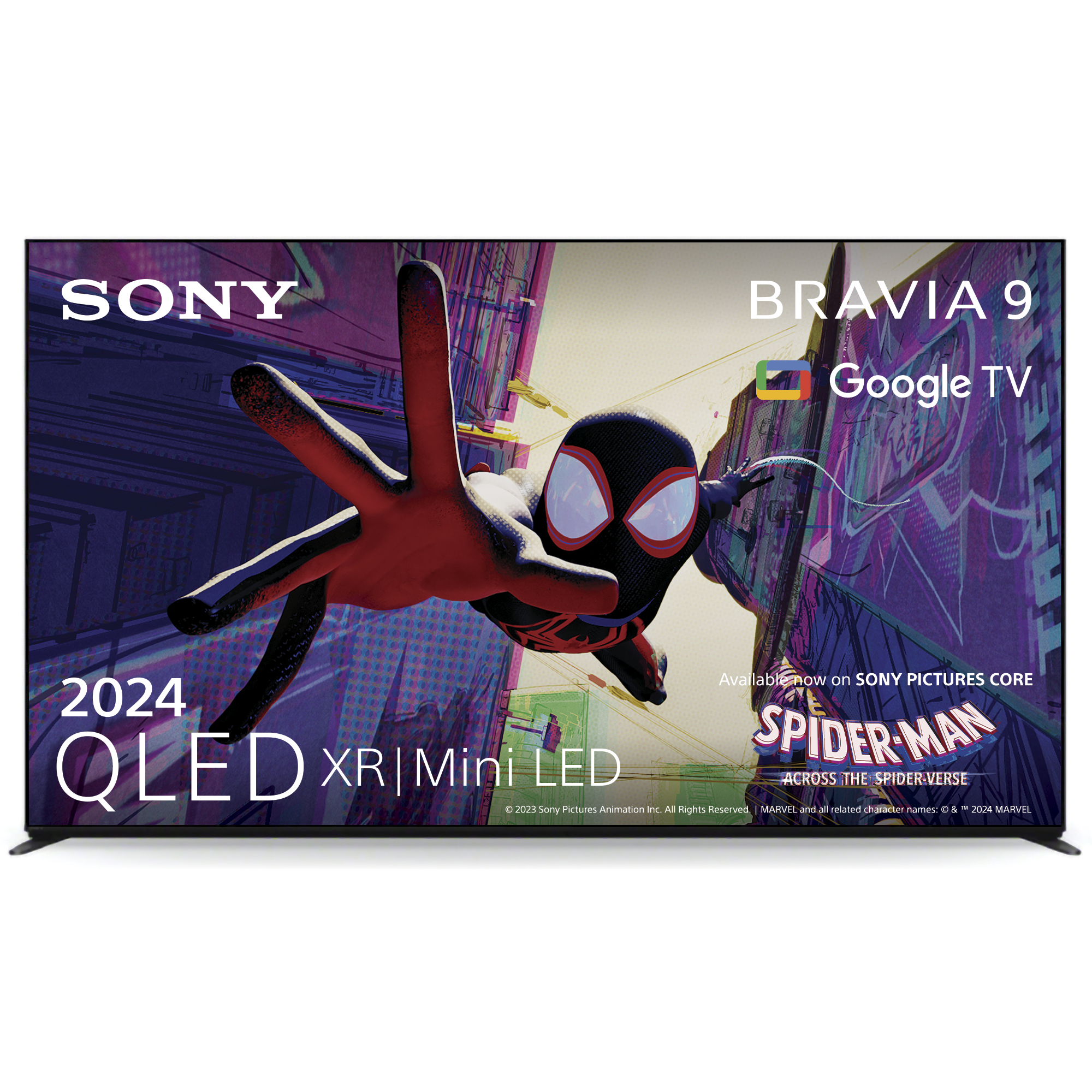
Bravia 8 – new OLED TV replaces A80L
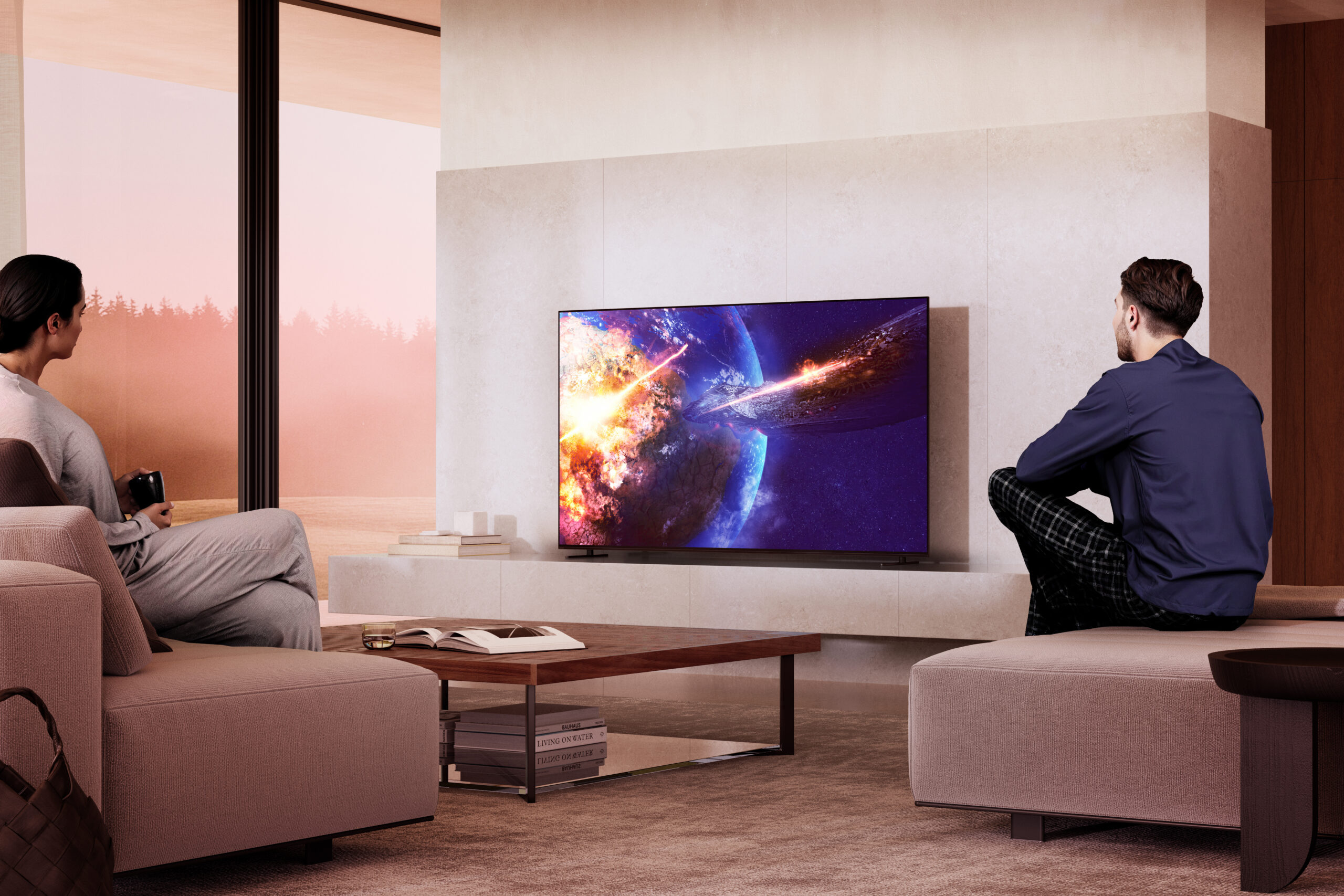
As Sony launches new LCD displays, their premium OLED displays are also getting a much welcome update, the successor to the popular Bravia A80L is the new Bravia 8. The successor to the popular Bravia A80L is the new Bravia 8, featuring Sony’s latest XR video processor with enhanced image processing and the built-in Acoustic Surface Audio+ sound system, but not the latest OLED panels with MLA technology.
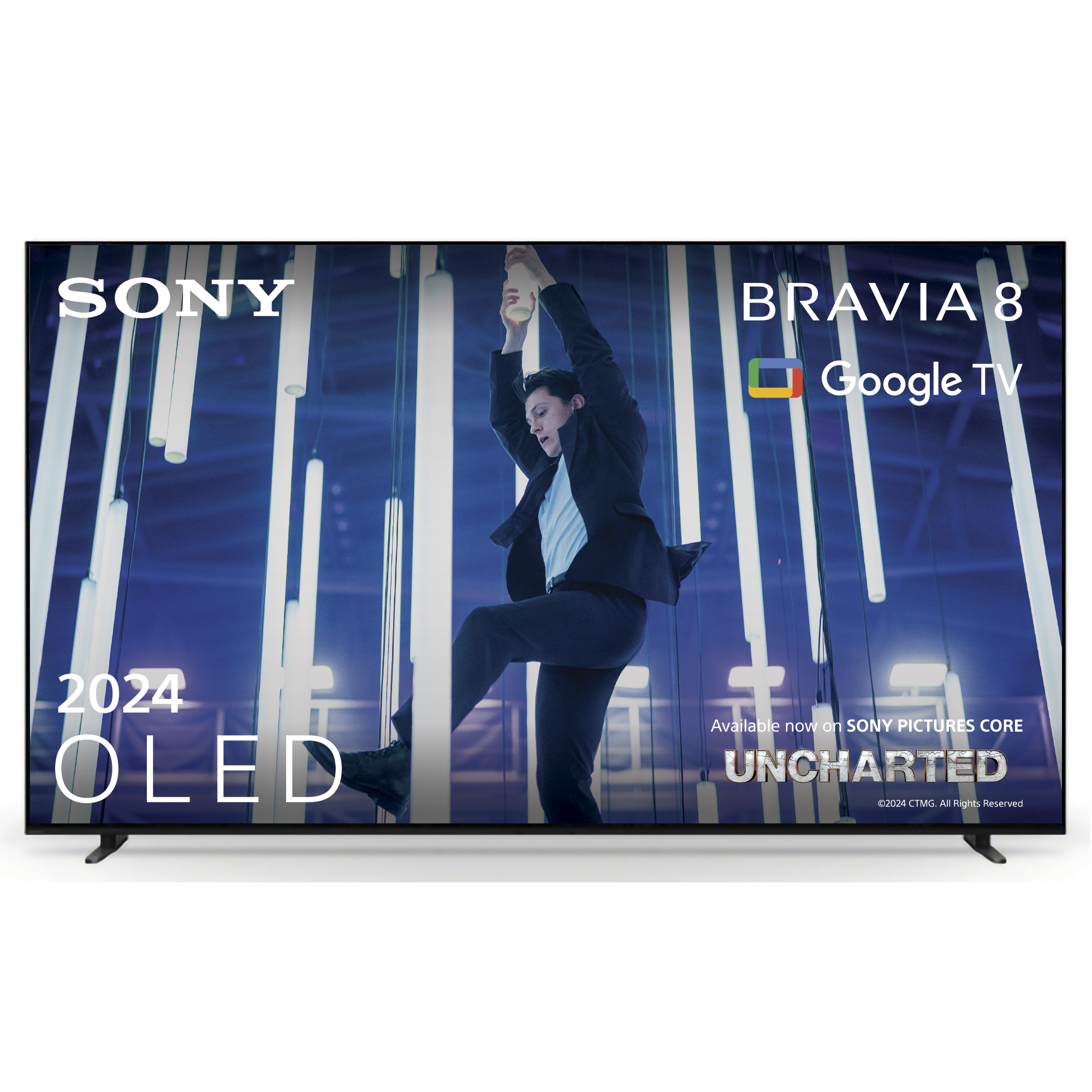
Bravia 7 – replacing the X90L
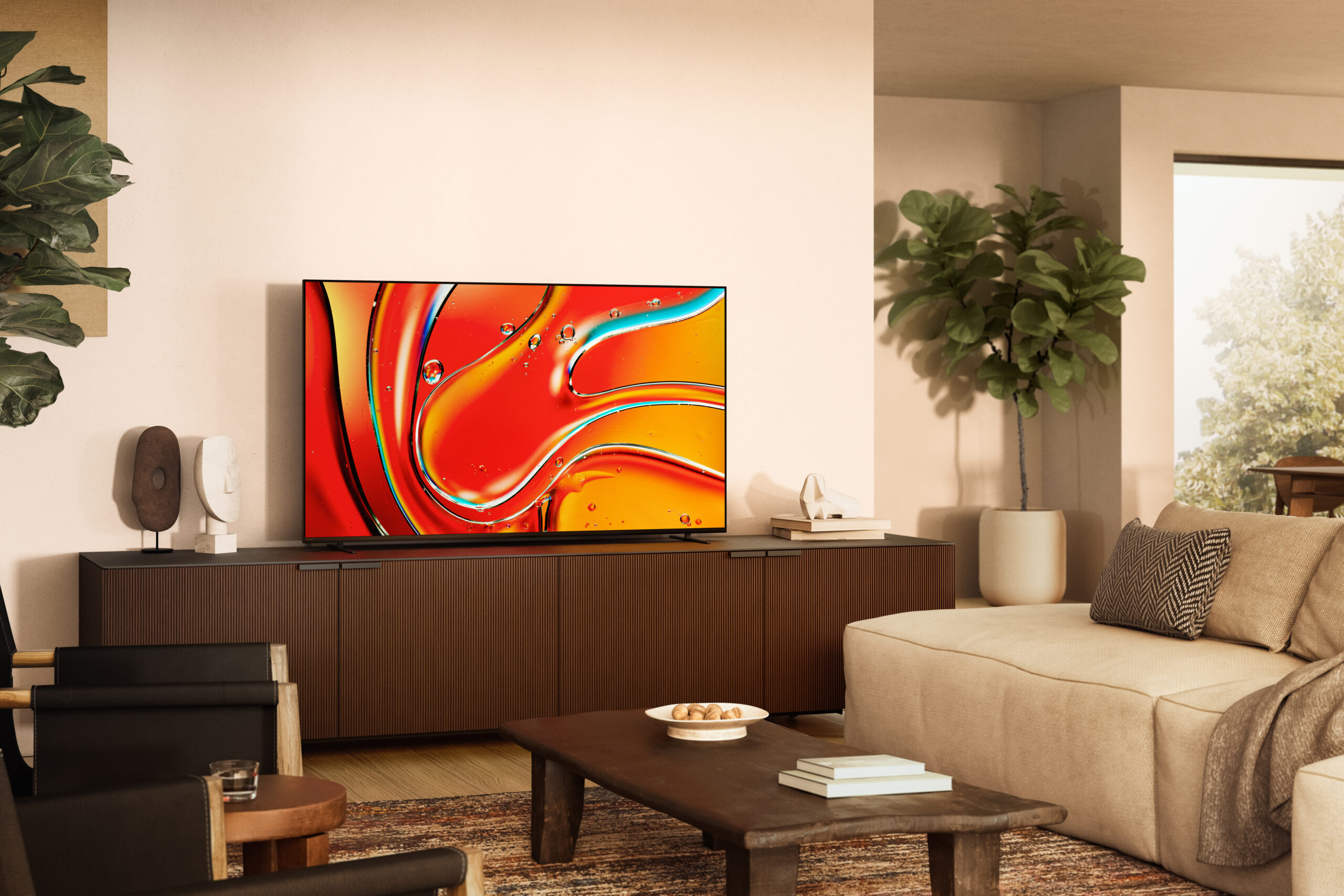
The new XR Backlight Master Drive technology is also utilised in the little brother Bravia 7, which is also an LCD TV and a kind of successor to the popular and more affordable X90L series. We weren’t given any information about brightness, but the Bravia 7 will reportedly have 30 per cent more light and 8 times as many dimming zones as its predecessor. So this could be a really interesting model in the premium class.
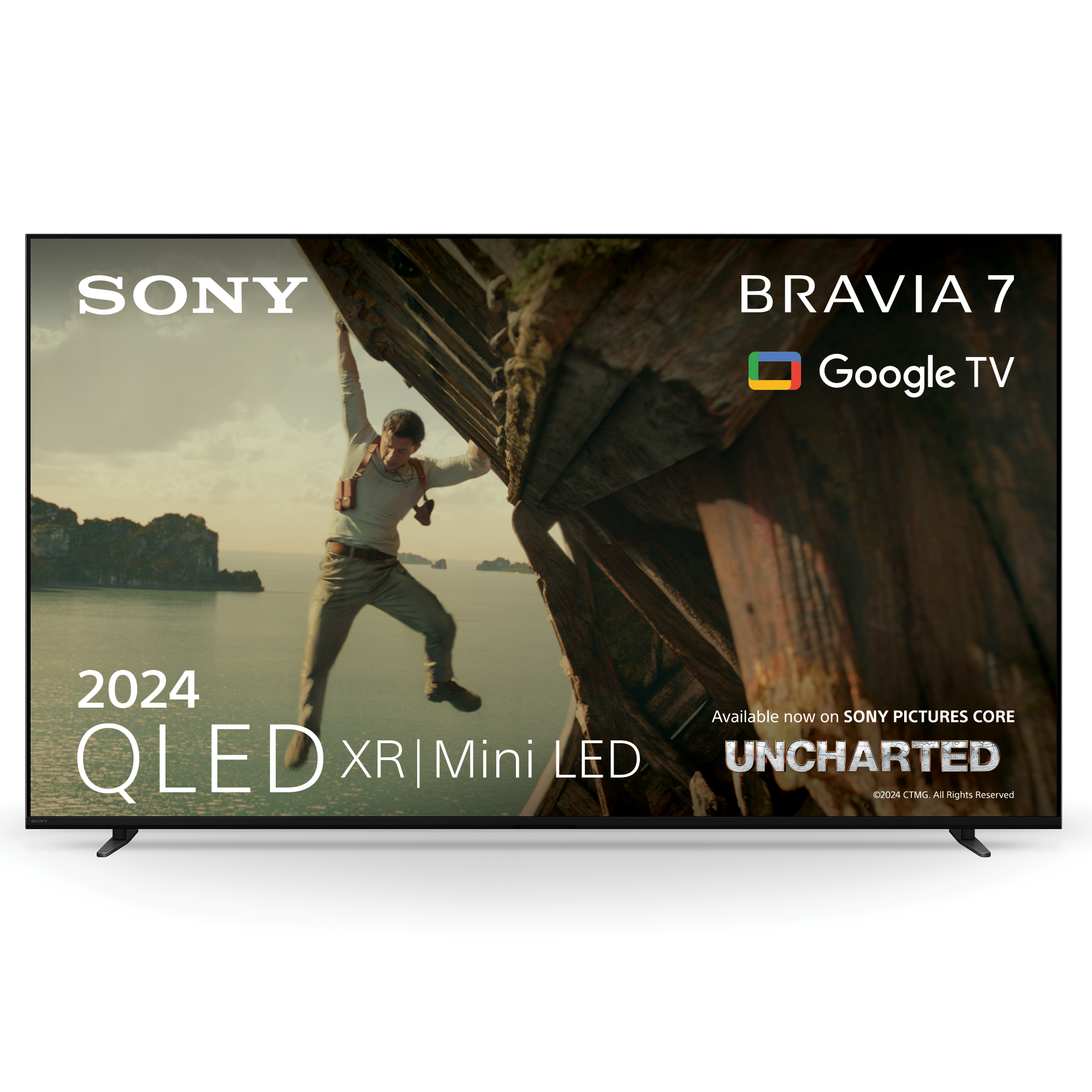
Price and availability
Sony’s new TV models will be available in spring and summer 2024. Below you can see the prices that L&B Tech Reviews has been informed of::
| Bravia 7 | Pris |
| Bravia 7 65″ | € 2,300 |
| Bravia 7 75″ | € 2,800 |
| Bravia 7 85″ | € 3,500 |
| Bravia 8 | |
| Bravia 8 55″ | € 2,200 |
| Bravia 8 65″ | € 2,900 |
| Bravia 8 77″ | € 4,000 |
| Bravia 9 | |
| Bravia 9 75″ | € 4,000 |
| Bravia 9 85″ | € 5,000 |
